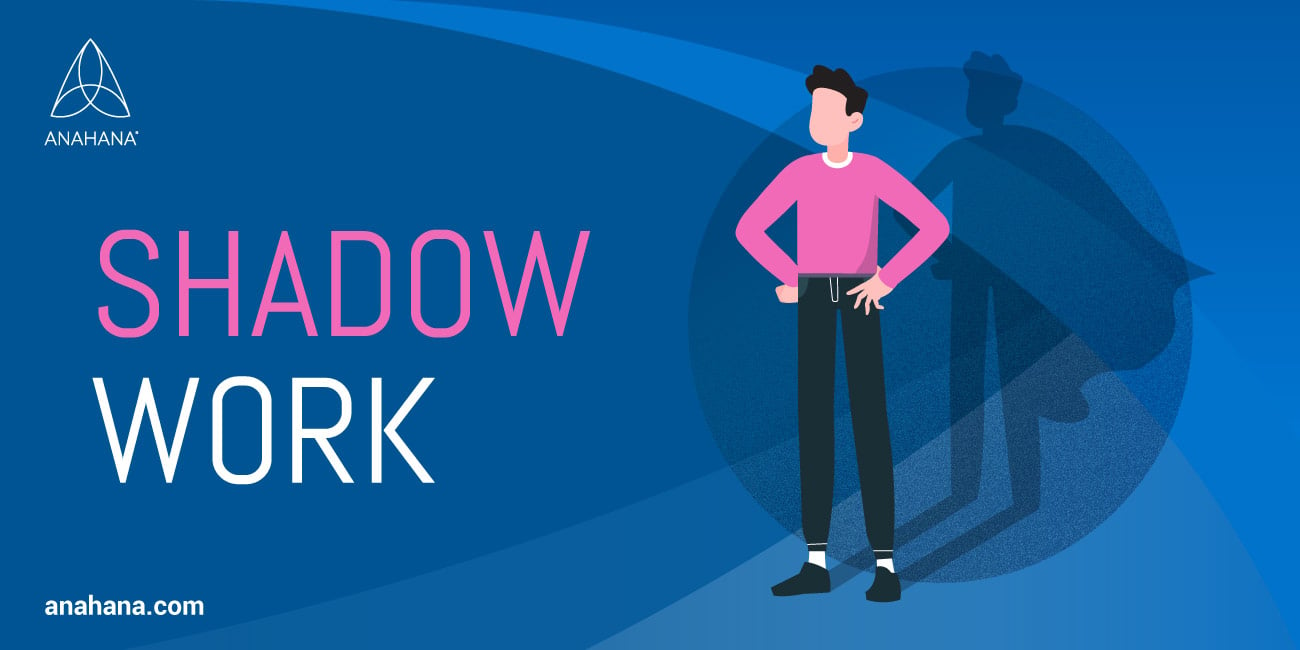Imposter Syndrome
If an individual is experiencing unfounded feelings of incompetence and self-doubt, it could be an indication of imposter syndrome.
Executives today face a number of unique challenges when it comes to stress management. Not only is stress itself a tremendous burden on your well-being and psyche, but it has a habit of compounding other problems in your life: Your physical health, social relationships, career, and more.

Many highly-skilled and talented individuals find that stress, however, is a double-edged sword, and therefore, hard to “give up.” Perhaps it’s been stress that’s caused trouble in your marriage, frequent headaches, and other problems. But it may have also been stress that technically pushed you to get through business school and helped you found your own company.
So, where does that land us?
Well, while some types of stress are indeed good for you, the massive weight of a constantly stressed-out lifestyle is decidedly unhealthy. Ramifications can be felt in every aspect of your life. It would behoove you, therefore, to take the necessary steps to combat the onslaught of stress in your life and improve your well-being and physical, and mental health as a result.
Ahead, we’ll unpack one of the most harmful types of executive stress — decision fatigue — and discuss how to manage it. We’ll also outline two simple and effective ways you can start mitigating chronic stress and start to unwind your mind.
Decision fatigue occurs when interminable daily decisions — no matter how small — accumulate over time and result in a range of unwanted emotions and behaviors.
Let’s say you run a small successful company, for example. Daily, you’re bombarded with employees, investors, clients, and others who need your answers and opinions — and they need them now.
At home, things aren’t much different. Your spouse and children want to know how your day went, what you should have for dinner, and if you can get time off for a weekend getaway next month. Perhaps you’re getting a new security system installed — how many cameras do you want? It’s time to renew your Netflix subscription — do you use it enough to keep it? Then the doorbell rings. Girl Scouts are selling cookies: How many boxes do you want?
Many of these decisions are small and therefore appear benign. But for executives and those who work in already high-stress, demanding positions, this near-endless stream of choices is extremely taxing and damaging.
Those who struggle with decision fatigue may feel like they’re at “the end of their rope” more often than not. In fact, this idiom is quite spot on.
The term decision fatigue comes from the studies of a social psychologist named Roy F. Baumeister. Like his predecessor Freud, Baumeister was enticed with the idea that each person has only a limited store of mental energy available each day. Notably, this limited store can be used for successful self-control and strong decision-making for a time. Once it’s been depleted, however, all bets are off.
(Most ironically) Poor decision-making skills
Irrational eating and drinking (for example, having junk food for lunch or overdoing the red wine at dinner)
Irrational spending
Anger and hostility
Irritability
A lack of focus
Depression
Body fatigue
Physical pain and discomfort
A suppressed immune system and a higher propensity for illness
Fortunately, there are several ways to mitigate decision fatigue. We’ll go over two other huge stress-reducers later, but for now, here are three things to try:
Get more rest
Take time off from decision-making.
Close your door for at least a few minutes during the work day.
Ask your family for some quiet moments alone right after you get home from work. Say your hellos, then sit quietly on the deck, take a bath, or lay in a quiet room for at least 10 minutes.
Spend time listening instead of thinking. For example, in the car on your drive home from work, turn on music or a podcast. Let yourself be part of an “audience” instead of the main attraction.
Though it may often seem like it, not all decisions demand your full attention. Large decisions like new hires, whether to relocate your family or how to delegate an important job should take the majority of your decision-making energy.
Other choices, such as what movie to watch with your spouse, where to meet someone for lunch, or which tie to wear to a meeting are less important. That isn’t to say you should simply not make these decisions at all. Instead, let your whimsy decide for you. Don’t dwell, just choose. The ramifications of making a “bad choice” on a tie or movie pick are virtually painless.
Yes, you may have many people telling you they need a decision immediately. More often than not, however, this is an exaggeration. Studies show that breaking down large decisions into small “bite-sized pieces,” digested over time, will actually help you make a more thought-out, better choice.
In terms of overall stress management techniques, walking meetings are an excellent tool. They can even improve cognitive function. In effect, walking meetings take in-office communication to the streets — literally.
Instead of holing up in your office or a boardroom to discuss the day’s business, new proposals, and more, a walking meeting allows you to move, relax, and focus while still getting work done.
So, how does it work?
First, walking meetings force you and your fellow employees and colleagues to get up and move. Most businessmen and women stay seated for the majority of the day, which is unwise for your health. Physical activity promotes an overall healthier lifestyle, which leads to boosted energy, improved mood, and reduced stress.
Next, research has proven that walking meetings can actually boost productivity. In other words, moving around while configuring future plans, working out problems, and exploring new ideas may actually improve the meeting’s outcomes.
The reason for these positive outcomes seems to be the relaxation effect that walking meetings produce. Neuro-chemicals in the brain is positively affected by physical activity, and this, in turn, will enhance executive function.
Additionally, participants are more engaged when a meeting is held during a walk. Focus and motivation are also improved. This may be due to the fact that leaders and employees can “bond” during walking meetings. Instead of a supervisor sitting at the head of the table or standing, everyone is on “equal footing” on a walk.
Furthermore, in the boardroom, work is front and center at all times; small talk is discouraged or prohibited. On a meeting walk, however, your group may connect over the weather, things you see, or people you meet while out and about. At the same time, your meeting goals can be adequately achieved and, as we’ve discussed, possibly even surpassed.
Most people have been told to “take a deep breath” at one time or another when they feel stressed. Still, many people continue to think of this common encouragement as merely a figure of speech. Perhaps one big breath is taken before going out on stage or delivering a presentation — with no apparent effect or benefit.
In fact, breathing exercises to reduce stress are beneficial. The benefit lies simply in utilizing the right techniques for you — and using them often. Think of breathing techniques as a medication for chronic stress. Other chronic illness medications must be taken regularly to be effective. The same is true for stress-reducing breathing techniques.
Breathing slower and deeper than usual, in a controlled and focused manner, helps by relaxing your body and mind and reducing tension. This type of breathing is what your body does naturally when you are relaxed. Choosing to induce it yourself tells your mind that you are relaxed — whenever you decide that you want to be.
Below are two breathing techniques that can be implemented at any time. Ideally, you might integrate them into your daily routine. For example, try performing one of the techniques at one of the following times each day:
Every morning after you wake up, but before you get out of bed
After lunch in your office, with your door closed for a moment of peace and silence
At night, as you’re falling asleep
Roll Breathing: Start with one hand on your stomach and the other on your chest. Close your eyes. Take one deep breath through your nose, aiming to raise the hand on your stomach on the in-breath. Make sure your other hand on your chest remains still. Breathe out deeply through your mouth, feeling your stomach hand go down. Complete 10 complete breath cycles.
4-7-8 Breathing: Start by placing your hands in the same position (one hand on your stomach and the other on your chest). Close your eyes. As you take your in-breath, count silently and slowly to 4, feeling your stomach rise. Your chest should be still. Now holding your breath, silently count to 7. Finally, release your breath slowly as you count to 8 and feel your stomach go down. Repeat this cycle 3 to 5 times.
Meditation is a common stress-reducing technique used by many successful executives and high-powered employees. Within meditation, the breathing techniques listed above (and others) are emphasized. The key difference is that the brain is also engaged in certain meditation practices as well. Another proven breathing method that helps reduce stress is square breathing, aka box breathing.
As an example, a beginning meditator may be told to take several deep, slow breaths while focusing their mind on the movement of air throughout their respiratory system. This attention of the mind means to give the brain a break from constantly trying to work out problems, anticipate future challenges, or dwell on past actions.
During this type of meditation session, it is important that practitioners realize their minds will drift. This is the mind’s job — as sure as the heart’s job is to beat continually. What must be done when the mind does wander is for the practitioner to simply notice and return to the breath, time and again.
More and more workers are feeling the stress in the workplace and how it is starting to affect them in a negative way. Things are starting to become too much, and you are having difficulties with how to handle stress at work, especially during times like these.
It is imperative that we learn how to deal with stress at work and do so for our well-being. Too much work-related stress can have a negative impact on both your physical and mental health, as mentioned above if left untreated. Work stress is one of the most common types of stress that you as an individual face during your life. During times like these, where we face an unprecedented amount of stressful jobs or the stress and anxiety due to the fear of losing our job, it is very easy to take on too much and finally become burnt out.
Reaching that point, when you are burnt out, you will experience feelings such as “I don’t enjoy anything anymore” or “I know I need to do this” but you are simply unable to get it done. To try and avoid this, you need to make sure you communicate how you feel to your boss and talk to your loved one. You need to express that you are feeling so stressed now, that it is work-related stress that brought you to this point, and that you need help!
Identify exactly the causes of stress at work is and once you have done this, take a step back to get an idea of how you reduce stress at work. Breathing techniques, meditation, and yoga are all excellent tools that will help you avoid feeling overworked or getting to the point when you feel burnt out. Besides these, communication is extremely important.
https://www.who.int/occupational_health/topics/stressatwp/en/
https://www.who.int/occupational_health/topics/brunpres0307.pdf?ua=1
https://hms.harvard.edu/news/college-stress
https://www.eurekalert.org/pub_releases/2018-08/aha-ado082318.php
https://www.ncbi.nlm.nih.gov/pmc/articles/PMC2633295/

If an individual is experiencing unfounded feelings of incompetence and self-doubt, it could be an indication of imposter syndrome.

Learn more about human thinking patterns and the concept of synchronicity. Understand the experience of synchronicity and how to interpret...

Uncovering the inner self and understanding the shadow aspects of it is a powerful practice that can lead to personal growth. Learn more about...